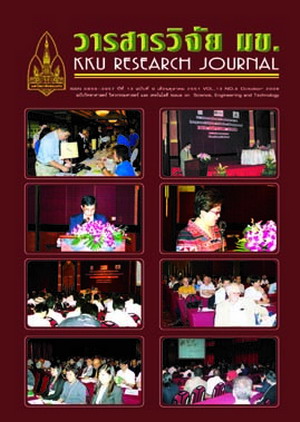Evaluating the eco-efficiency of 3R waste from the petroleum and petrochemical group in the Map Ta Phut industrial estate, Thailand with the environmental improvement productivity indicator
Main Article Content
Abstract
The concept of eco-efficiency has become increasingly popular in the environmental debate of product systems, processes, and/or companies in recent year. Eco-efficiency is generally described as a ratio between environmental impact and value of production. This paper presents the eco-efficiency indicator, called environmental improvement productivity (EIP), for assessing the environmental improvement from 3R waste of the petroleum and petrochemical (PP) group in the Map Ta Phut Industrial Estate (MTPIE), Thailand. The EIP is defined as the ratio of total 3R waste, as a value of production, to the total amount of CO2 reduction by the 3R activities, as an environmental impact value or environmental improvement of 3R waste, which was evaluated by the CO2 emission calculated from the basis of 3R waste incineration. The total amount of waste and 3R waste generated from the PP group in fiscal year 2007, which was separated into 4 quarters, were collected and used to create the waste flow diagram of the PP group. The results show that more than 60% of the total waste generated from the PP group in the MTPIE was classified to be as 3R waste. The evaluation of eco-efficiency shows the rather decrease of EIP values from quarter 1 to quarter 4, which refers to the increase of environmental improvement. The research can demonstrate the environmental benefits from the 3R waste, which will feed into strategic development and would enable to encourage the 3R activities for industrial sector in Thailand.
Article Details
How to Cite
Khwankue, U., & Charmondusit, K. (2017). Evaluating the eco-efficiency of 3R waste from the petroleum and petrochemical group in the Map Ta Phut industrial estate, Thailand with the environmental improvement productivity indicator. Asia-Pacific Journal of Science and Technology, 13(9), 1107–1116. retrieved from https://so01.tci-thaijo.org/index.php/APST/article/view/83550
Section
Research Articles


